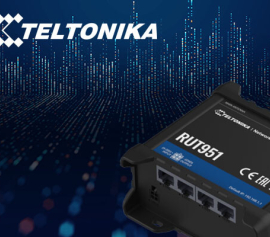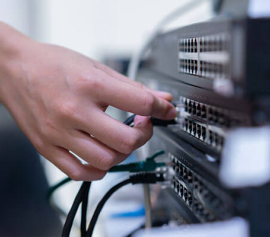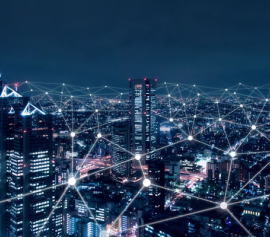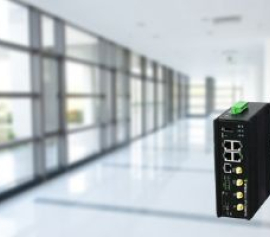What Is Video Analytics and Why Is It Important?
Video surveillance is everywhere, with hours and hours of footage getting stored in the cloud. Processing through these recordings requires manpower, which, in no way, is efficient. This is where video analytics (VA) comes in.
In recent years, video analytics—which includes intelligent video analytics and content analysis—has become somewhat well-known in both business and academics. Using deep learning, this technology has transformed work automation—formerly thought of as the sole province of human expertise.
This tutorial will introduce you to the fundamental ideas of video analytics, investigate its useful applications in automating processes and collecting important insights, and offer necessary issues for establishing intelligent video analytics solutions inside your company.
Definition of Video Analytics
Video analytics turns videos into useful data. It watches videos and figures out what's happening, like who or what is there, what they're doing, and where they're going. This information can be used to make decisions, like sending a security guard or changing camera settings.
For example, some surveillance systems will usually record in low-quality settings to ensure that the footage remains small in size. However, you will need high-quality videos in case of security threats to identify individuals or figure out what’s happening. Video analytics can detect any suspicious activity and then improve the quality of the recordings.
Video analytics turns hours of security footage into useful information. By automatically seeing and marking important events, security, and management workers may focus on high-priority events, and their workload is greatly reduced.
How Does Video Analytics Work?
Two main ways are possible for video content analysis: post-processing and real-time. While post-processing helps in-depth research and forensic analysis, real-time analysis guarantees instantaneous identification and reaction to events as they happen. Let’s explore more below.
Getting Data
Video data comes from many places. Common sources include security cameras, traffic cams, and online videos. To get the best results, it's important to have cameras covering the whole area you want to watch. More cameras usually means better information.
Processing the Data
Video analysis can be done in two ways:
- On the camera: This is faster for things that need quick action, like spotting problems right away.
- On a powerful computer: This is better for detailed investigations and finding patterns over time.
Using both methods gives us the third way of processing videos, which is a hybrid approach to VA.
Defining Goals
Once the hardware is in place, the next step is to define specific goals. For example, do you want to detect car crashes, monitor crowd behavior, or identify shoplifters? Each scenario requires training models to perform specific tasks.
Core video analysis tasks include:
- Image classification: Identifying objects within an image (e.g., car, person).
- Object localization: Pinpointing the location of an object in an image (e.g., bounding box around a car).
- Object detection: Identifying and locating multiple objects in an image (e.g., cars and pedestrians).
- Object tracking: Following objects as they move across video frames.
Building models from scratch is time-consuming. Fortunately, resources like ImageNet and COCO provide large datasets to accelerate training. Additionally, pre-trained models and transfer learning techniques can significantly reduce development time. Open-source projects and computer vision libraries further streamline the process.
Human Review
Video systems help people watch over places, but they can't make decisions on their own. People still need to watch the videos and decide what to do.
Applications of Video Analytics
The simple definition of video analytics tells you that this technology is best paired with surveillance, reducing the need for manpower. While it is one of the primary use cases of video analytics, this process is utilized in many other aspects. Below are a few of them.
1. Surveillance and Security
Automated systems can detect unauthorized access to restricted areas, triggering real-time alerts for security personnel. It is also used to monitor and manage crowd density in public spaces, enhancing safety and security during large gatherings.
These technologies enable rapid identification of individuals and vehicles, supporting law enforcement and security efforts.
Brøndby IF was a pioneer in stadium security, implementing facial recognition technology in 2019. This system enhances safety by instantly identifying and denying entry to banned individuals.
2. Healthcare
In the healthcare sector, video analytics finds use alongside security and monitoring. Through tracking motions, fall detection, and medical protocol adherence assurance, it helps to improve patient safety.
Video analytics offers doctors insightful analysis of facial expressions and body language, therefore guiding diagnosis and treatment. Furthermore, remote healthcare makes it possible for doctors to track patients' behaviors and illnesses from far away.
The University at Buffalo has developed a smartphone app to assist in the early detection of autism spectrum disorder (ASD). By analyzing a child's facial expressions and eye movements while viewing social scenes, the app can identify potential indicators of ASD. Unlike typically developing children, those with autism often exhibit distinct gaze patterns.
3. Retail
Retailers leverage video analytics for customer behavior analysis, which includes:
- Understanding shopping patterns
- Optimizing store layouts
- Enhancing customer service through tools like heat mapping queue management and more
Real-time video analysis of shelf inventory helps maintain stock levels and prevents lost sales due to out-of-stock items. Lastly, this technology strengthens store security and reduces theft by identifying suspicious behaviors.
Amazon Go redefined the grocery shopping experience by eliminating checkout lines. Customers simply grab items and go, with purchases automatically charged to their accounts. This revolutionary concept relies on sophisticated video analysis software and in-store sensors to accurately track customer behavior and inventory. By seamlessly merging technology with retail, Amazon Go continues to reshape the industry.
4. Transportation
Video analytics is used for traffic management to optimize traffic flow. It can detect accidents, enforce regulations, and analyze congestion through tools like vehicle counting.
The New York City Department of Transportation provides a prime example of video analytics in action. By deploying cameras equipped with machine learning, the city effectively monitors traffic patterns, detects congestion, identifies weather-related impacts, and even enforces parking regulations. Real-time analysis of video feeds enables rapid responses to traffic incidents and informed decision-making.
5. Industrial Automation
Video analytics boosts efficiency by monitoring production lines, detecting defects, and ensuring quality control. It can identify safety hazards like PPE violations, resulting in improved worker security.
In addition, video analysis of machinery predicts equipment failures, minimizing downtime and preventing unexpected breakdowns.
6. Smart Cities
Integrating VA into city infrastructure can enhance public safety, manage utilities, and monitor public spaces for better resource allocation. It can also be used to check waste levels in bins, optimizing collection routes and schedules. Analyzing video data can help manage energy consumption in public facilities.






